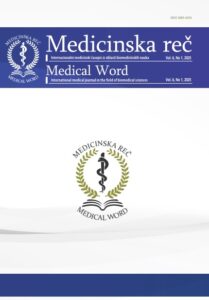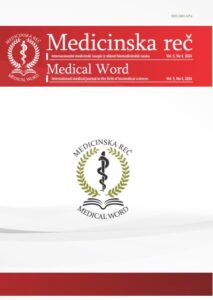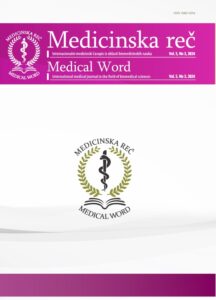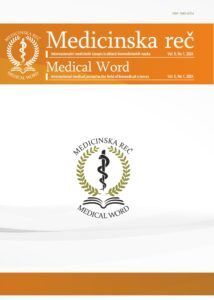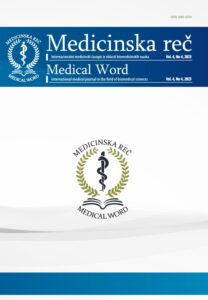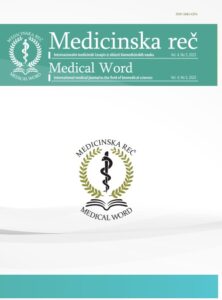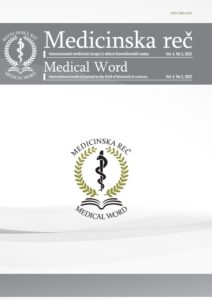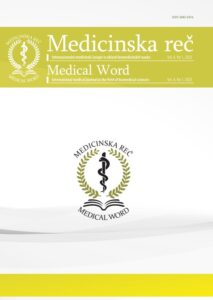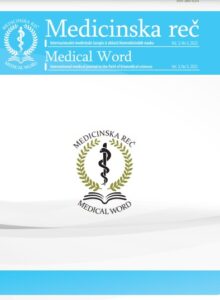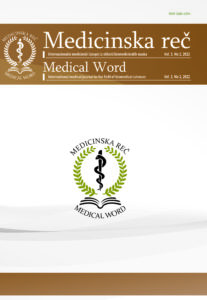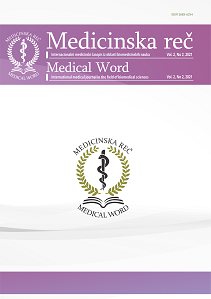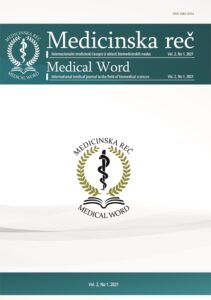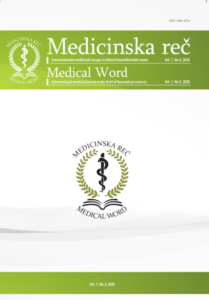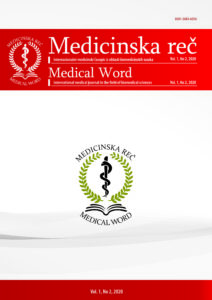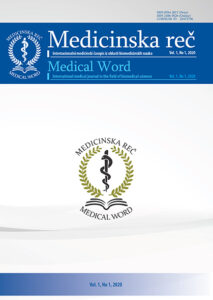Nicotine: from plants to people
Jana Olson, William Aryitey, Roberta Costanzo
Med Word 2020; 1(3): 142–147
Abstract
Nicotine is naturally present in many crops, including but not limited to tobacco, eggplant, and tomatoes. Only in the tobacco plant is nicotine present in high enough quantities (~2% of dry weight) to have pharmacological effects. People have recognized the stimulating effects of the smoke created by burning dried tobacco leaves for thousands of years, and cigarette smoking remains the most common form of nicotine uptake from tobacco.
Decades of epidemiologic data show that smoking causes a number of serious diseases (including cardiovascular diseases, lung cancer, and chronic obstructive pulmonary disease [COPD]). Undoubtedly, the best way to avoid the harm from smoking is to never start. For current smokers, quitting smoking altogether is the most effective way to reduce the risk of harm and smoking-related disease.
Along with other aspects such as taste and ritual, nicotine is one of the reasons people smoke. Nicotine, while addictive and not risk-free, is not the primary cause of smoking-related diseases. Indeed, experts agree that smoking-related diseases are caused primarily by chronic exposure to the harmful constituents that are produced when tobacco is burning. Nevertheless, many people still mistakenly believe that nicotine is a major cause of tobacco-related diseases.
While nicotine-containing products should not be used by certain groups of people — such as minors, people with or at risk of heart disease, diabetes, epilepsy, or seizure, pregnant or breast-feeding women or women who think they may be pregnant — delivery of nicotine by less harmful means can support public health goals by encouraging smokers who would otherwise continue smoking to switch to less harmful products. It is, therefore, pivotal to address the biggest misconceptions about nicotine to empower smokers to make informed decisions.
In this article, we discuss basic facts about nicotine, its effects on the human body, as well as the risks related to nicotine consumption.
Key words: nicotine, tobacco, smoking
References
- Siegmund B, Leitner E, Pfannhauser W, et al. Determination of the Nicotine Content of Various Edible Nightshades (Solanaceae) and Their Products and Estimation of the Associated Dietary Nicotine Intake. J Agric Food Chem 1999; 46: 3113-20.
- Alkam T, Nabeshima T. Molecular mechanisms for nicotine intoxication. Neurochemistry International 2019; 125: 117-26.
- Xu S, Brockmöller T, Navarro-Quezada A, Kuhl H, Gase K, Ling Z, et al. Wild tobacco genomes reveal the evolution of nicotine biosynthesis. Proc Natl Acad Sci U S A 2017; 114(23): 6133-8.
- Steppuhn A, Steppuhn A, Gase K, Krock B, Halitschke R, Baldwin IT. Nicotine’s defensive function in nature. PLoS Biol 2004; 2(8): e217.
- Castaldelli-Maia JM, Ventriglio A, Bhugra D. Tobacco smoking: From ‘glamour’ to ‘stigma’. A comprehensive review. Psychiatry Clin Neurosci 2016; 70: 24-33.
- Benowitz NL, Hukkanen J, Jacob P, 3rd. Nicotine chemistry, metabolism, kinetics and biomarkers. Handb Exp Pharmacol 2009; (192) 29-60.
- World Health Organization. International Classification of Diseases. Accessed on 01 April 2019.
- American Psychiatric Association: Diagnostic and Statistical Manual of Mental Disorders, Fifth Edition; American Psychiatric Association (2013) ( “DSM-5”), at 485. Accessed on 01 October 2018.
- Bruijnzeel AW. Neuropeptide systems and new treatments for nicotine addiction. Psychopharmacology 2017; 234(9-10): 1419-37.
- Office of the Surgeon General. How Tobacco Smoke Causes Disease: The Biology and Behavioral Basis for Smoking-Attributable Disease: A Report of the Surgeon General. Atlanta, GA, US. Centers for Disease Control and Prevention, 2010.
- Tobacco Advisory Group of the Royal College of Physicians. Nicotine without smoke – tobacco harm reduction. Royal College of Physicians, 2016.
- Benowitz NL, Jacob P 3rd, Jones RT, Rosenberg J. Interindividual variability in the metabolism and cardiovascular effects of nicotine in man. J Pharmacol Exp Ther 1982; 221(2): 368-72.
- Centers for Disease Control and Prevention (US). How tobacco smoke causes disease: The biology and behavioral basis for smoking-attributable disease: A report of the Surgeon General, 2010.
- Brossard P, Weitkunat R, Poux V, Lama N, Haziza C, Picavet P, Baker G, Lüdicke F. Nicotine pharmacokinetic profiles of the Tobacco Heating System 2.2, cigarettes and nicotine gum in Japanese smokers. Regul Toxicol Pharmacol 2017; 89: 193-9.
- Fredersdorf S. Dobrynina M, Taranu BV, Teichert A, Ancerewicz J, Haziza C, Lüdicke F. Nicotine pharmacokinetics and pharmacodynamic effects of P4M3 compared with subjects’ own electronic cigarette. Poster presented at SRNT 2019.
- Schaller JP, Keller D, Poget L, Pratte P, Kaelin E, McHugh D. Evaluation of the tobacco heating system 2.2. Part 2: Chemical composition, genotoxicity, cytotoxicity, and physical properties of the aerosol. Regul Toxicol Pharmacol 2016; 81(S2): S27-S47.
- Scherer G, Lee PN. Smoking behavior and compensation: A review of the literature with meta-analysis. Regul Toxicol Pharmacol 2014; 70(3): 615-28.
- Lüdicke F, Picavet P, Baker G, Haziza C, Poux V, Lama N, Weitkunat R. Effects of Switching to Tobacco Heating System 2.2 Menthol, Smoking Abstinence, or Continued Cigarette Smoking on Biomarkers of Exposure: A Randomized, Controlled, Open-Label, Multicenter Study in Sequential Confinement and Ambulatory Settings (Part 1). Nicotine Tob Res 2018; 20(2): 161-72.
- “Platform 1’s mainstream aerosol compared to reference cigarette smoke”. PMIScience.com.
- Office of the Surgeon General. The Health Consequences of Smoking – 50 Years of Progress: A Report of the Surgeon General. Atlanta, GA, US. 2014. Centers for Disease Control and Prevention.
- IARC Working Group on the Evaluation of Carcinogenic Risk to Humans. Smokeless Tobacco and some Tobacco-specific N-Nitrosamines. IARC Monographs on the Evaluation of Carcinogenic Risks to Humans, No. 89. Lyon: International Agency for Research on Cancer; 2007.
- National Academies of Sciences Engineering and Medicine. Public Health Consequences of E-Cigarettes. Washington, DC: The National Academies Press: 2018.
- Murray RP, Connett JE, Zapawa LM. Does nicotine replacement therapy cause cancer? Evidence from the Lung Health Study. Nicotine Tob Res 2009; 11: 1076-82.
- Tønnesen P. Smoking cessation and COPD. Eur Respir Rev 2013; 22(127): 37-43.
- Tobacco Advisory Group of the Royal College of Physicians. Harm reduction for nicotine addiction. London: Royal College of Physicians; 2007.
- Zeller M. Director of US FDA’s Center for Tobacco Products; Presentation at Legacy Foundation, 11 June 2014.
- Royal College of Physicians, Nicotine without smoke: Tobacco harm reduction, 2016.
- Abrams DB, Glasser AM, Villanti AC, Pearson JL, Rose S, Niaura RS. Managing nicotine without smoke to save lives now: Evidence for harm minimization. Prev Med 2018; 117: 88-97.
- Nitzkin JL. The case in favor of e-cigarettes for tobacco harm reduction. Int J Environ Res Public Health 2014; 11(6): 6459-71.
- Levy DT, Cummings KM, Villanti AC, Niaura R, Abrams DB, Fong GT, et al. A framework for evaluating the public health impact of e-cigarettes and other vaporized nicotine products. Addiction 2016; 112(1): 8-17.
- Public Health England. PHE publishes independent expert e-cigarettes evidence review. 2018.
- U.S. FDA. Statement from FDA Commissioner Scott Gottlieb, M.D., on actions to advance our comprehensive plan to reduce tobacco-related disease and death, through new efforts to improve the tobacco product application review process, including a newly proposed rule, 2019.
- Public Health England. PHE publishes independent expert e-cigarettes evidence review, 2018.
- Czoli CD, Fong GT, Mays D, Hammond D. How do consumers perceive differences in risk across nicotine products? A review of relative risk perceptions across smokeless tobacco, e-cigarettes, nicotine replacement therapy and combustible cigarettes. Tob Control 2017; 26: e49-e58.
- Schlagintweit HE, Perry RN, Darredeau C, Barrett SP. Non-pharmacological considerations in human research of nicotine and tobacco effects: A review. Nicotine Tob Res 2019; 22(8): 1260-6.
- O’Brien EK, Nguyen AB, Persoskie A, Hoffman AC. U.S. adults’ addiction and harm beliefs about nicotine and low nicotine cigarettes. Prev Med 2017; 96: 94-100.


